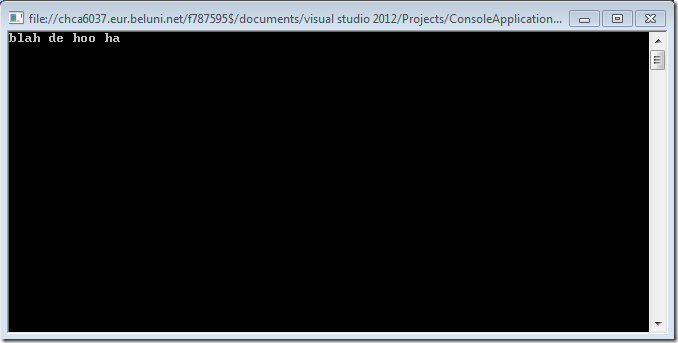Download (or use NuGet): https://github.com/esskar/Serialize.Linq
using System.Collections.Generic;
using System.Linq;
using Microsoft.VisualStudio.TestTools.UnitTesting;
using Serialize.Linq.Serializers;
using Serialize.Linq.Tests.Internals;
using System;
using System.Linq.Expressions;
namespace Serialize.Linq.Tests
{
public class FilmDto
{
public string Name { get; set; }
public DateTime ReleaseDate { get; set; }
}
[TestClass]
public class HowToSerializeAnExpressionTests
{
public TestContext TestContext { get; set; }
private static IQueryable<FilmDto> GetFilms()
{
return new List<FilmDto>
{
new FilmDto { Name = "Gravity", ReleaseDate = new DateTime(2013, 10, 15) },
new FilmDto { Name = "Blade Runner", ReleaseDate = new DateTime(1975, 2, 28) },
new FilmDto { Name = "Superman", ReleaseDate = new DateTime(1985, 6, 6) },
}
.AsQueryable();
}
[TestMethod]
public void BasicExpressionSerialization()
{
var predicate = (Expression<Func<FilmDto, bool>>)(film => film.Name.ToLower().Contains("n"));
var serializer = new ExpressionSerializer(new BinarySerializer());
var bytes = serializer.SerializeBinary(predicate);
var predicateDeserialized = serializer.DeserializeBinary(bytes);
this.TestContext.WriteLine("{0} serializes to bytes with length {1}", predicate, bytes.Length);
ExpressionAssert.AreEqual(predicate, predicateDeserialized);
var films = GetFilms();
var expectedCount = films.Where(predicate).Count();
// a simple example of executing an expression, leveraging IEnumerable
var actualCount = films.Where((Expression<Func<FilmDto, bool>>)predicateDeserialized).Count();
Assert.AreEqual(expectedCount, actualCount);
// constructing the same call using more Expressions
Expression whereMethodCall = Expression.Call(
typeof(Queryable),
"Where",
new[] { films.ElementType },
films.Expression,
Expression.Quote(predicateDeserialized));
// executing the expression, leveraging IQueryable
actualCount = films.Provider.CreateQuery<FilmDto>(whereMethodCall).Count();
Assert.AreEqual(expectedCount, actualCount);
}
}
// Bear in mind this issue with .NET 45: http://forums.asp.net/t/1864636.aspx
// reproducible if you use: (film => film.ReleaseDate < new DateTime(1990, 01, 01))
// (which is fixed with .NET 451!)
// For finer grain support:
// http://msdn.microsoft.com/en-us/library/vstudio/bb882637.aspx
}

If you want to swap out the BinarySerializer for Json, this would be the payload:
{
"__type":"L:#Serialize.Linq.Nodes",
"NT":18,
"T":{
"G":[
{
"N":"Serialize.Linq.Tests.FilmDto"
},
{
"N":"System.Boolean"
}
],
"N":"System.Func`2"
},
"B":{
"__type":"MC:#Serialize.Linq.Nodes",
"NT":6,
"T":{
"N":"System.Boolean"
},
"A":[
{
"__type":"C:#Serialize.Linq.Nodes",
"NT":9,
"T":{
"N":"System.String"
},
"V":"n"
}
],
"M":{
"D":{
"N":"System.String"
},
"M":8,
"S":"Boolean Contains(System.String)"
},
"O":{
"__type":"MC:#Serialize.Linq.Nodes",
"NT":6,
"T":{
"N":"System.String"
},
"A":[
],
"M":{
"D":{
"N":"System.String"
},
"M":8,
"S":"System.String ToLower()"
},
"O":{
"__type":"M:#Serialize.Linq.Nodes",
"NT":23,
"T":{
"N":"System.String"
},
"E":{
"__type":"P:#Serialize.Linq.Nodes",
"NT":38,
"T":{
"N":"Serialize.Linq.Tests.FilmDto"
},
"N":"film"
},
"M":{
"D":{
"N":"Serialize.Linq.Tests.FilmDto"
},
"M":16,
"S":"System.String Name"
}
}
}
},
"P":[
{
"__type":"P:#Serialize.Linq.Nodes",
"NT":38,
"T":{
"N":"Serialize.Linq.Tests.FilmDto"
},
"N":"film"
}
]
}
If you want to swap it out for the XmlSerializer, this would be the payload:
<?xml version="1.0" encoding="UTF-8"?>
<E xmlns="http://schemas.datacontract.org/2004/07/Serialize.Linq.Nodes" xmlns:i="http://www.w3.org/2001/XMLSchema-instance" i:type="L">
<NT>Lambda</NT>
<T>
<G>
<T>
<N>Serialize.Linq.Tests.FilmDto</N>
</T>
<T>
<N>System.Boolean</N>
</T>
</G>
<N>System.Func`2</N>
</T>
<B i:type="MC">
<NT>Call</NT>
<T>
<N>System.Boolean</N>
</T>
<A>
<E i:type="C">
<NT>Constant</NT>
<T>
<N>System.String</N>
</T>
<V xmlns:a="http://www.w3.org/2001/XMLSchema" i:type="a:string">n</V>
</E>
</A>
<M>
<D>
<N>System.String</N>
</D>
<M>Method</M>
<S>Boolean Contains(System.String)</S>
</M>
<O i:type="MC">
<NT>Call</NT>
<T>
<N>System.String</N>
</T>
<A />
<M>
<D>
<N>System.String</N>
</D>
<M>Method</M>
<S>System.String ToLower()</S>
</M>
<O i:type="M">
<NT>MemberAccess</NT>
<T>
<N>System.String</N>
</T>
<E i:type="P">
<NT>Parameter</NT>
<T>
<N>Serialize.Linq.Tests.FilmDto</N>
</T>
<N>film</N>
</E>
<M>
<D>
<N>Serialize.Linq.Tests.FilmDto</N>
</D>
<M>Property</M>
<S>System.String Name</S>
</M>
</O>
</O>
</B>
<P>
<E i:type="P">
<NT>Parameter</NT>
<T>
<N>Serialize.Linq.Tests.FilmDto</N>
</T>
<N>film</N>
</E>
</P>
</E>





























